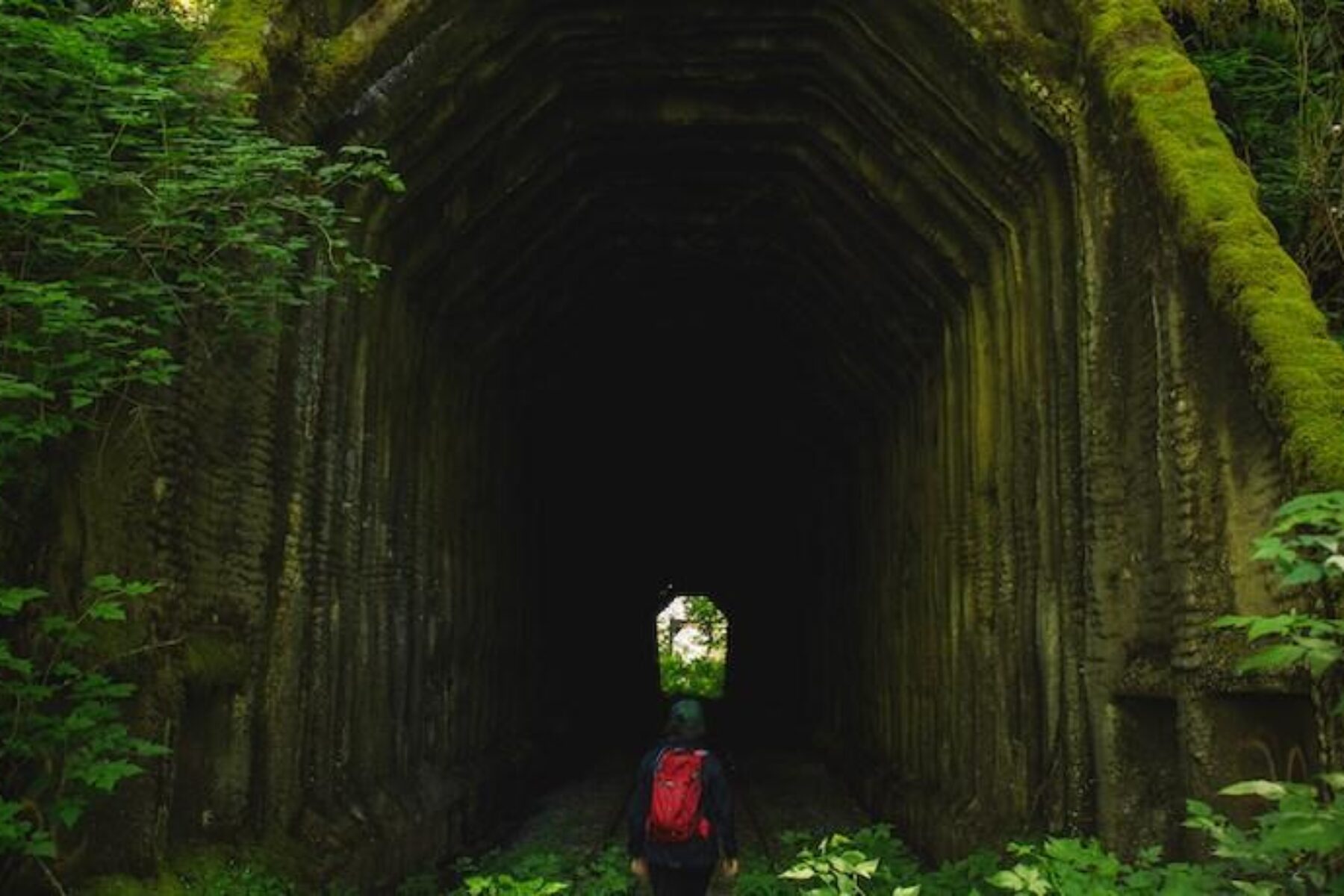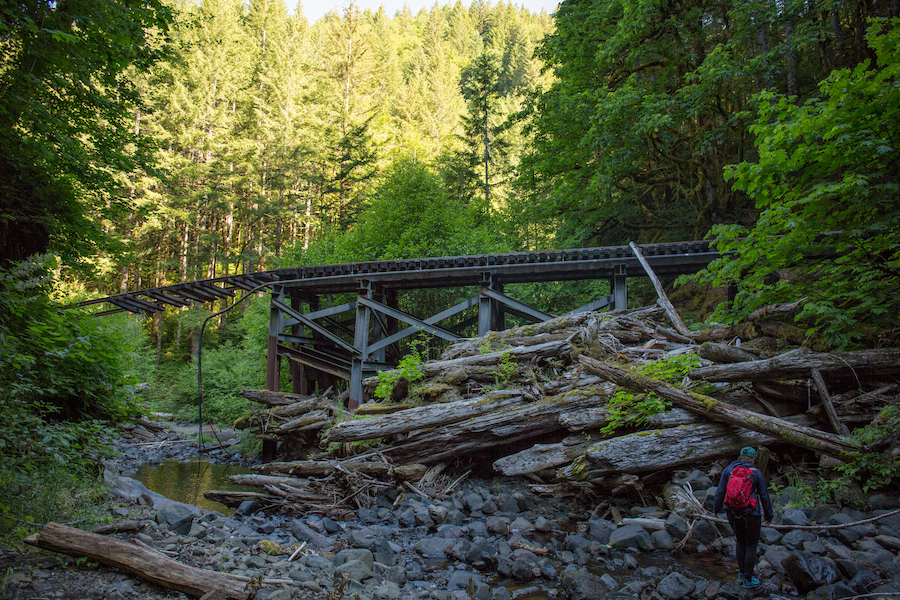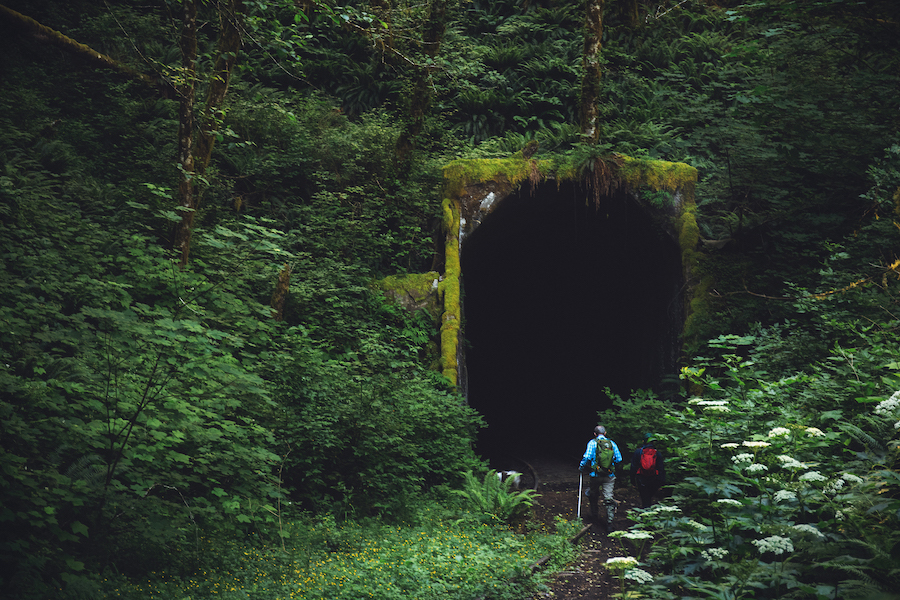Trail Tourism Adventures Await Along Salmonberry Corridor in Oregon

On the outskirts of Oregon’s largest city, there lies a treasure trove of outdoor adventure and wonder—the Salmonberry Trail, a planned multiuse trail stretching more than 86 miles through vast forests, deep valleys and coastal terrain. Oregon’s most ambitious rail-trail project to date, the Salmonberry Trail will eventually connect the urban area of Portland to the rich rural landmarks of Rockaway Beach, and towns like Wheeler and Timber, ending at Tillamook on the Oregon Coast. In the future, the trail could also help make up a larger trail system that links to major natural treasures in the state such as the Cascade Range and Columbia Gorge.
Encompassing a variety of Oregon’s most beautiful landscapes, the trail—which is being developed by the Salmonberry Trail Foundation and the Salmonberry Trail Intergovernmental Agency, and is supported by more than 30 other organizations—gives the full experience of Oregon’s outdoor heritage.
“You’ll see active local-owned businesses like dairy farms and fisheries, while you go through Oregon’s beautiful mountainous rainforests and valleys,” said Alana Kambury, project director for the Salmonberry Trail Foundation. “It’s a little Alice in Wonderland.”
Reimagining a Historic Corridor

Built in 1911, the Pacific Railway and Navigation line transported lumber and freight through the most remote sections of Northwest Oregon, supporting the logging industry and, later, the dairy and wine industries. The rail line remained in use until 2007, when a catastrophic storm rendered much of the railroad damaged through the canyon of the Salmonberry River, and a portion of the rail line was forced to cease operations.
A series of events resulted in the formation of the Salmonberry Coalition in 2011, and since that time, support for the trail has grown, and planning has evolved with the completion of a concept plan, two master plans for the coast and valley segments, and an economic development and health benefit study.
Planned to be completed by 2035, the trail’s construction is broken into four segments—the Valley segment, from Banks to the Tillamook State Forest; the Canyon Segment heading west, the River segment starting at the confluence of the Nehalem River to Wheeler; and the Coastal segment heading south to Tillamook—with development dispersed across various teams and organizations. The eastern Valley and western Coastal segments have devised plans for trailhead development and design, while the interior River and Canyon segments are awaiting completion of their master plans.
A Unique Experience

The Salmonberry Trail is designed so that each trail user will have a unique—and personalized—experience, with current estimates of annual visitors surpassing 276,000 upon the trail’s completion. Visitors will have an opportunity to traverse the wildest of the Coastal Range forests, meander the Nehalem and Salmonberry Rivers, immerse themselves in the wonder of the beaches and enjoy access to Portland’s urban culture. The Salmonberry Trail Foundation sees its location adjacent to the Portland Metro region providing “public transportation access to a signature trail, opening up the opportunity for everyone to enjoy the Salmonberry,” said Kambury.
In Banks, trail users will have an opportunity to take an additional trip along the 23-mile Banks-Vernonia State Trail—which will connect to the Salmonberry Trail.
One of the most anticipated sections of the Salmonberry Trail will enable trail users to explore the Pacific coast along a 26-mile corridor connecting the town of Wheeler to the southern end of Tillamook Bay. “It’s one of my favorite parts of the Salmonberry Trail,” said Kambury, adding, “I am excited for the communities along the coast to have a safe route to enjoy the region while welcoming recreationists from around the world.”
For towns like Wheeler, a community of 414 people, the trail is more than just a new place to walk or bike—and a few residents have already seized the opportunity to capitalize on the trail’s potential to draw both tourists and tourism dollars. For example, the owners of the Salmonberry Saloon—a locally sourced restaurant and bar—focuses its business on people who come to the area to take in the beautiful Oregon coast. Their business, one of many along the Salmonberry Trail, is just one example of the direct economic impact trail-user spending can have on the region, which is estimated to be $20 million per year when the trail is complete.
A Win for Oregonians

On helping to support the trail’s completion, “it’s a no-brainer,” said Jeff Walton, owner of Vernonia Springs—a campground located on the Banks-Vernonia State Trail, about 4 miles north of the planned connection to the Salmonberry Trail. “[The Salmonberry Trail] will have an enormous impact [on the Valley and the region].”
He added, “The volume of visitors has gone up. People are excited at the notion of riding a bike from the valley to the coast.”
On top of all of this, the Salmonberry Trail offers a space for people to enjoy the outdoors safely. Unencumbered by the dangers of biking on busy roads like US Highway 101, trail users will have peace of mind while riding through rural Oregon. Not to mention the health-care savings, which—with the increases in exercise brought on by the trail—could amount to an estimated $400,000 annually, equaling about $700 per person for residents.
As Kambury said, the Salmonberry Trail is a “win for Oregonians and for anyone looking to experience Oregon’s heritage.”
Related: Trails Transform America: Salmonberry Trail

Donate
Everyone deserves access to safe ways to walk, bike, and be active outdoors.
